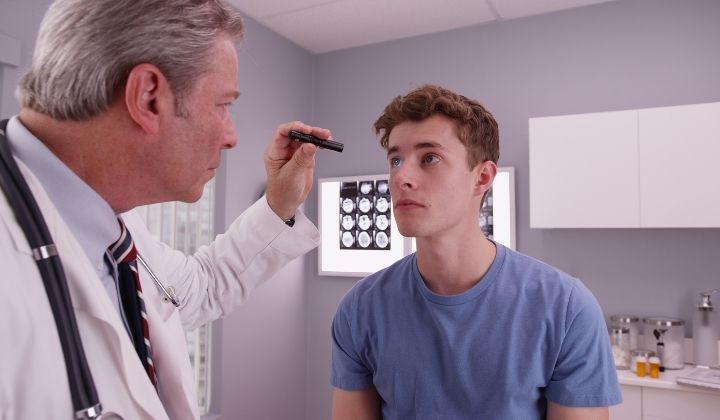Traumatic brain injuries are not just a concern for athletes who play high-impact sports. In fact, these types of injuries are high-risk for passengers, bikers, and pedestrians who have been involved in an accident. Due to their commonality in all of these instances, special attention has been directed to this area of research by academics and medical experts who seek to better understand the likelihood of traumatic brain injuries following an accident. Whiplash and concussions are two of the most common brain trauma injuries to arise from motor vehicle accidents and accidents involving bikers and pedestrians.
While our vehicles are built with insulative measures that protect us should a motor vehicle accident happen, whiplash injuries and concussions are known to occur even when vehicular restraints and airbags are present at the time of impact. Whiplash, which is commonly referred to as Whiplash Associated Disorder, occurs when there is a rapid flexion-extension of the neck. In motor vehicle accidents, this type of injury is associated with rear-end and low-impact collisions. A variation in symptoms can signify the severity of Whiplash Associated Disorder that the injured party has suffered. Complaints of neck pain, stiffness, and tenderness that is delayed in nature often indicates a lower grade of Whiplash Associated Disorder. Contrastingly, Whiplash Associated Disorder that is characterized by the early onset of neck pain, stiffness, and tenderness with a decreased range of motion and focal tenderness will generally render a finding of a higher grade of Whiplash Associated Disorder. The degree and severity of Whiplash Associated Disorder is influenced by factors including the severity of the collision, injury mechanisms, and an individual’s symptoms.
By definition, a concussion is understood to be a type of traumatic brain injury caused by impact to the head that results in both the head and brain moving back and forth in a rapid manner. Concussions cause the sufferer to experience an immediate and transient alteration in brain function due to mechanical intervention. Symptoms associated with a concussion can include headaches, sensitivity to light and noise, an inability to concentrate, and a decline in judgement, balance, and co-ordination. Notably, a diagnosis of a concussion does not require a loss of consciousness. Concussions are more likely to occur in frontal and rear impacts with severities of 20 km/h and below. Wearing a seatbelt while travelling in a car and wearing a helmet while riding a bike can prevent the likelihood of concussion related injuries. Despite often being viewed as a temporary injury, a number of concussion sufferers experience what is referred to as post-concussion syndrome. Post-concussion syndrome is marked by the presence of concussion symptoms that carry on for weeks, months, or years following the original incident of injury. The precise source and triggers of post-concussion syndrome have not been pinpointed by medical experts. Current research and medical knowledge have failed to identify why some concussions manifest into post-concussion syndrome and others do not.
Despite this special focus and attention within the scientific and medical community, traumatic brain injuries remain a gray area not just for medical experts, but for legal experts and the general public as well. However, a new method developed by researchers at the University of Arizona may finally be the key to demystifying traumatic brain injuries such as concussions. This technique, articulated in the Journal of Computer Methods in Biomechanics and Biomedical Engineering, utilizes experimental and computational approaches to brain injury research to calculate the probability of a traumatic brain injury due to a vehicular collision. This new method even has the ability to formulate predictions in situations where the speed of the collision and angle of impact are unknown. Additionally, the method can be used where information about the brain of the individual involved in the accident is unaccounted for.
While still in its infancy, the new method may prove to be crucial from a legal standpoint where the earlier a sufferer of a traumatic brain injury is diagnosed the sooner they will be able to secure legal counsel to advocate on their behalf. This new technology is a promising progressive step forward in ensuring that parties who have suffered a traumatic brain injury are duly compensated and receive the rehabilitative benefits necessary to assist in their recovery. Our team of expert lawyers at Avanessy Giordano LLP are here to help if you or a loved one has been involved in an accident and have suffered a traumatic brain injury. Contact Avanessy Giordano LLP today to learn more about how we can help you after sustaining a traumatic brain injury because of an accident.


